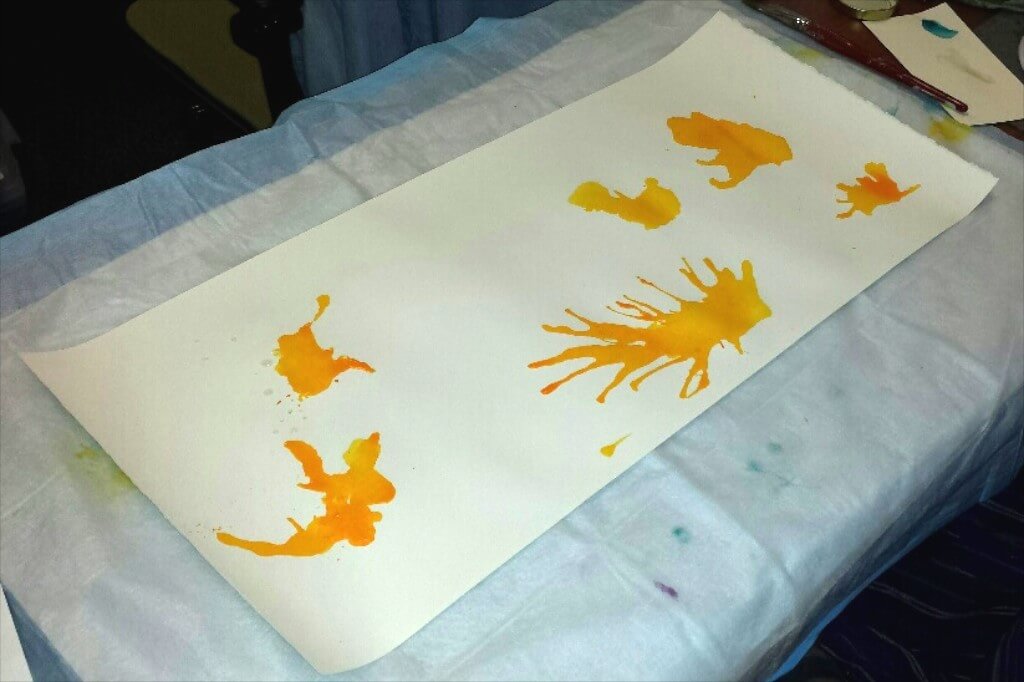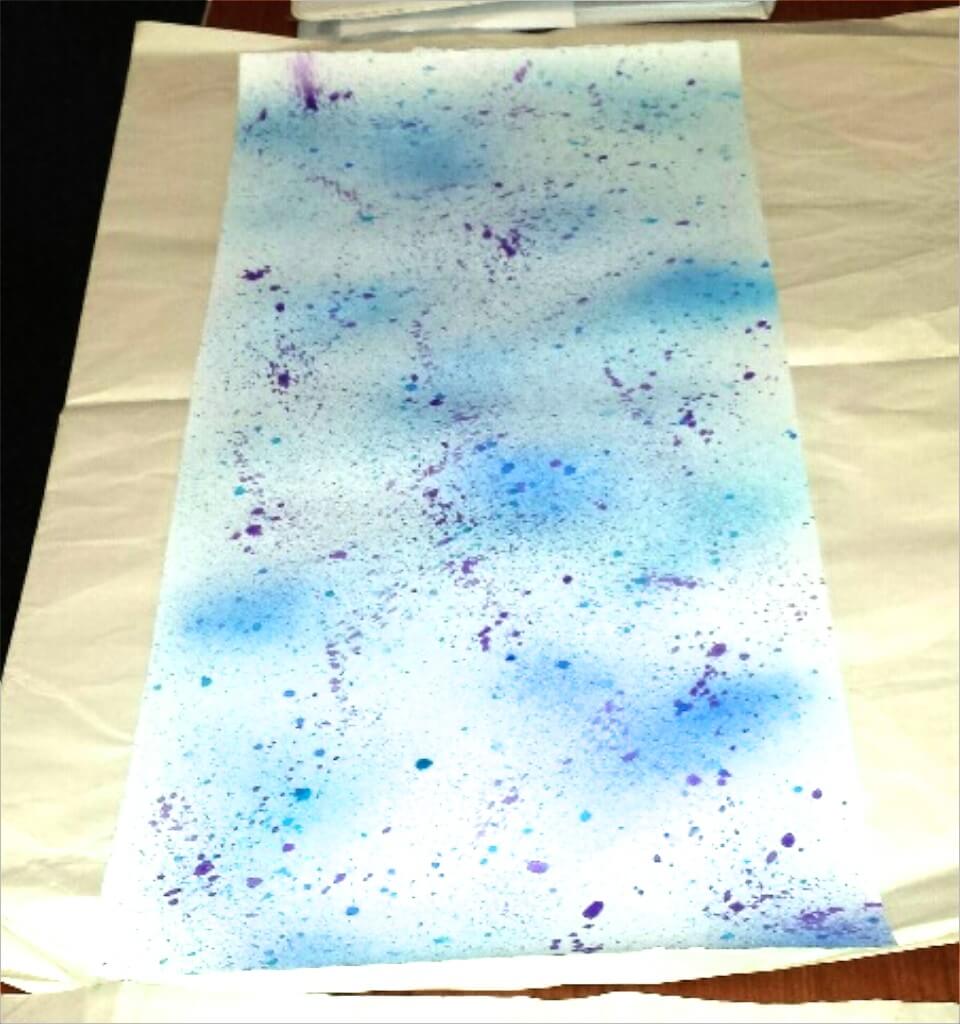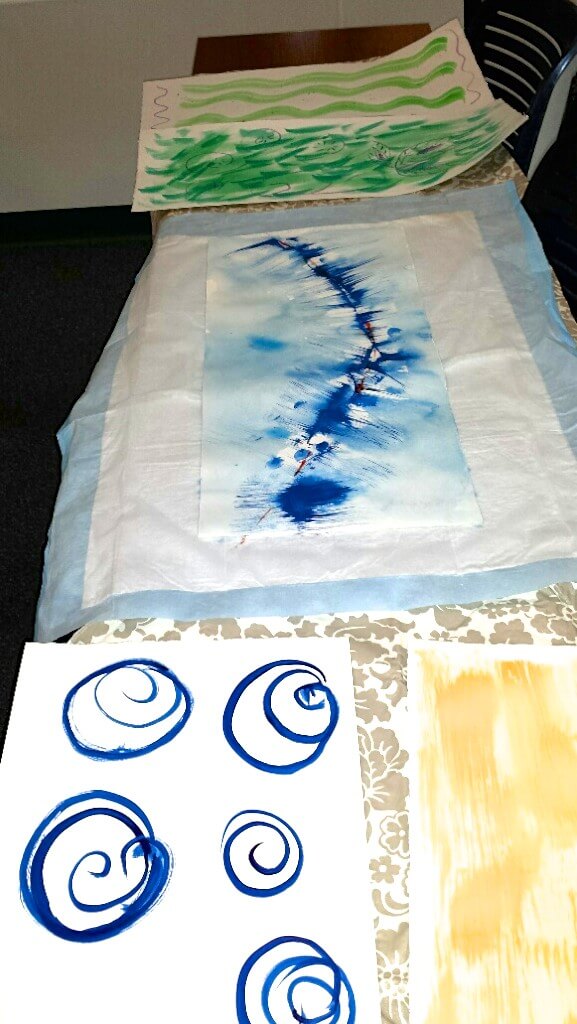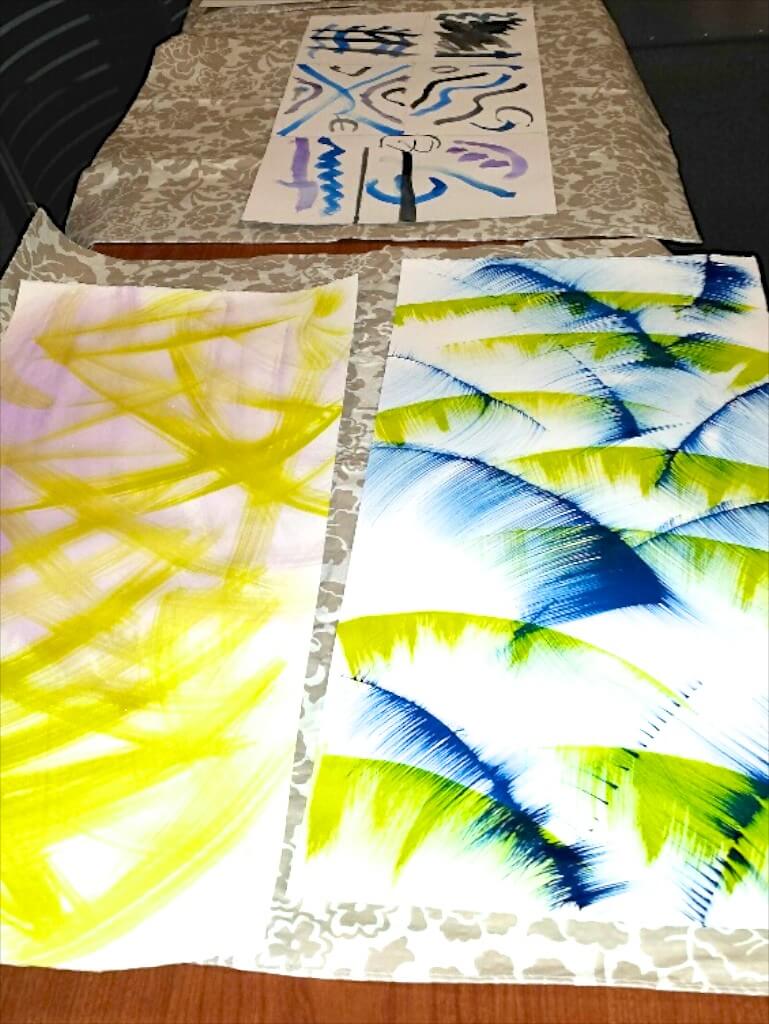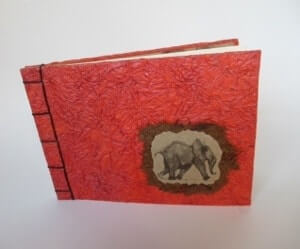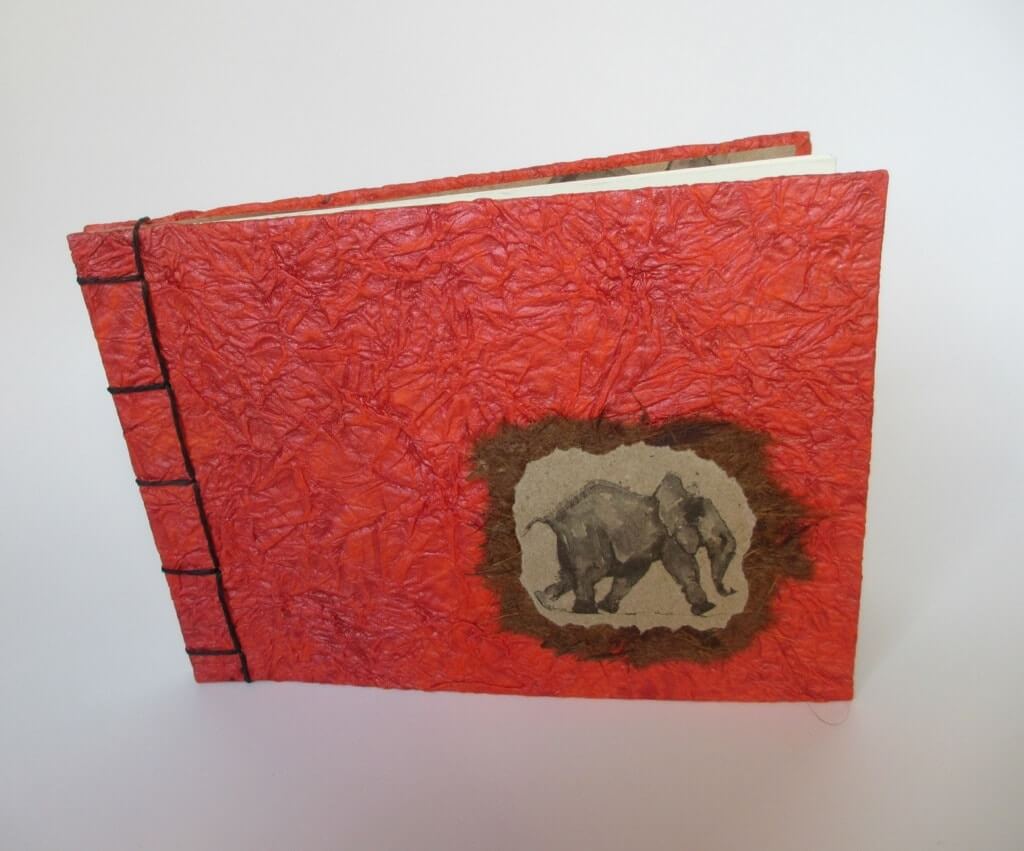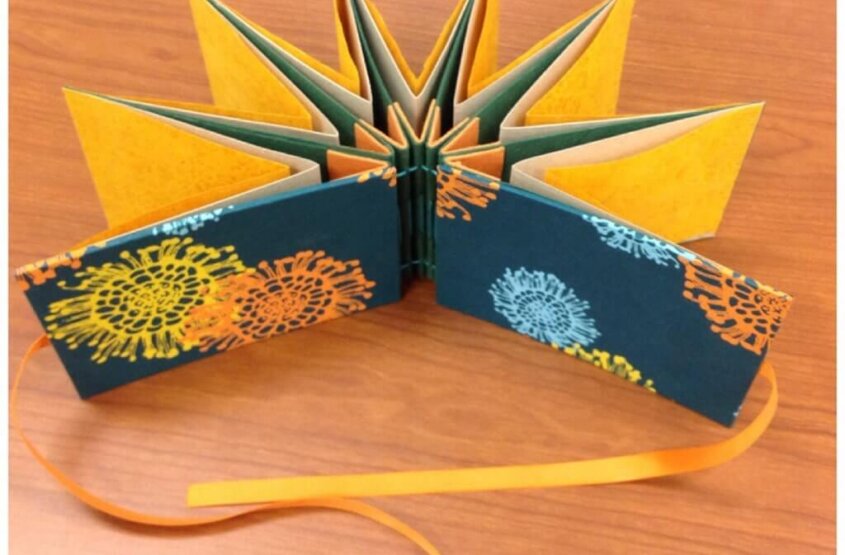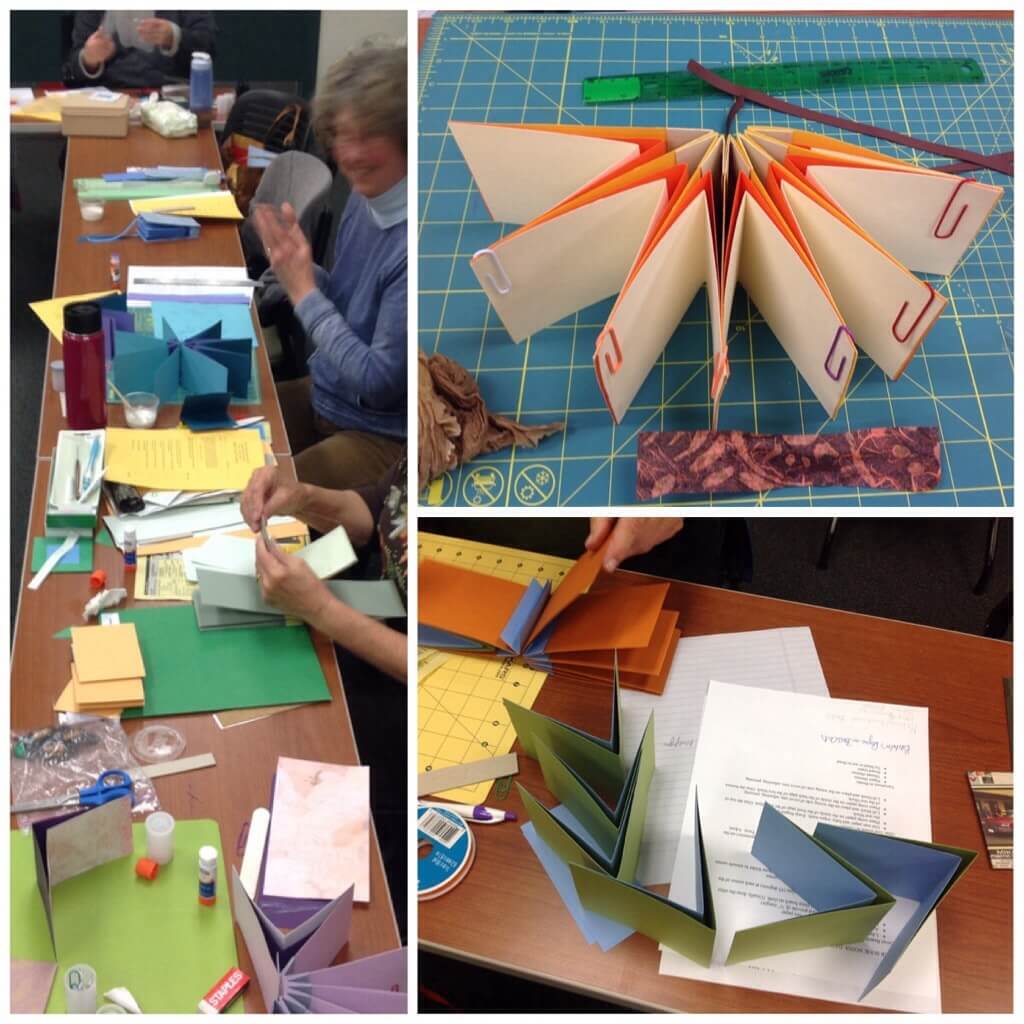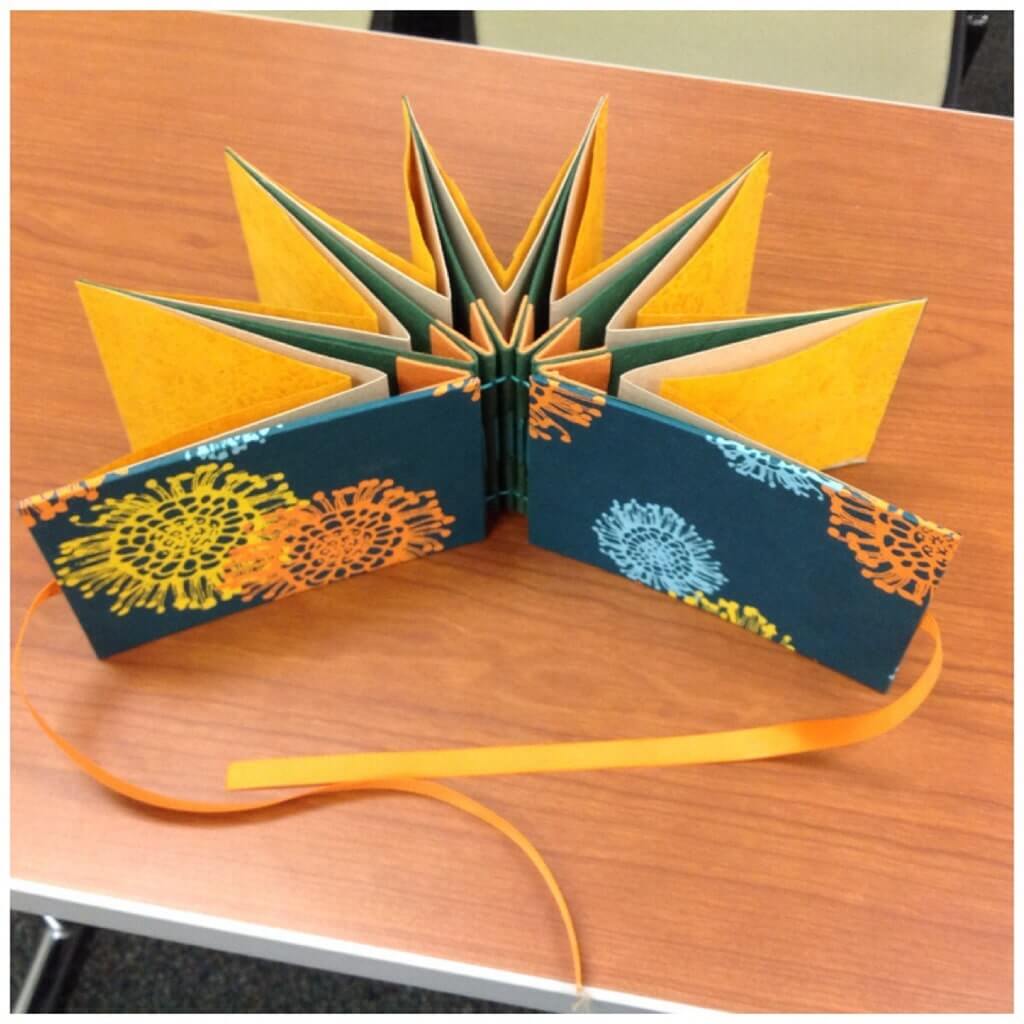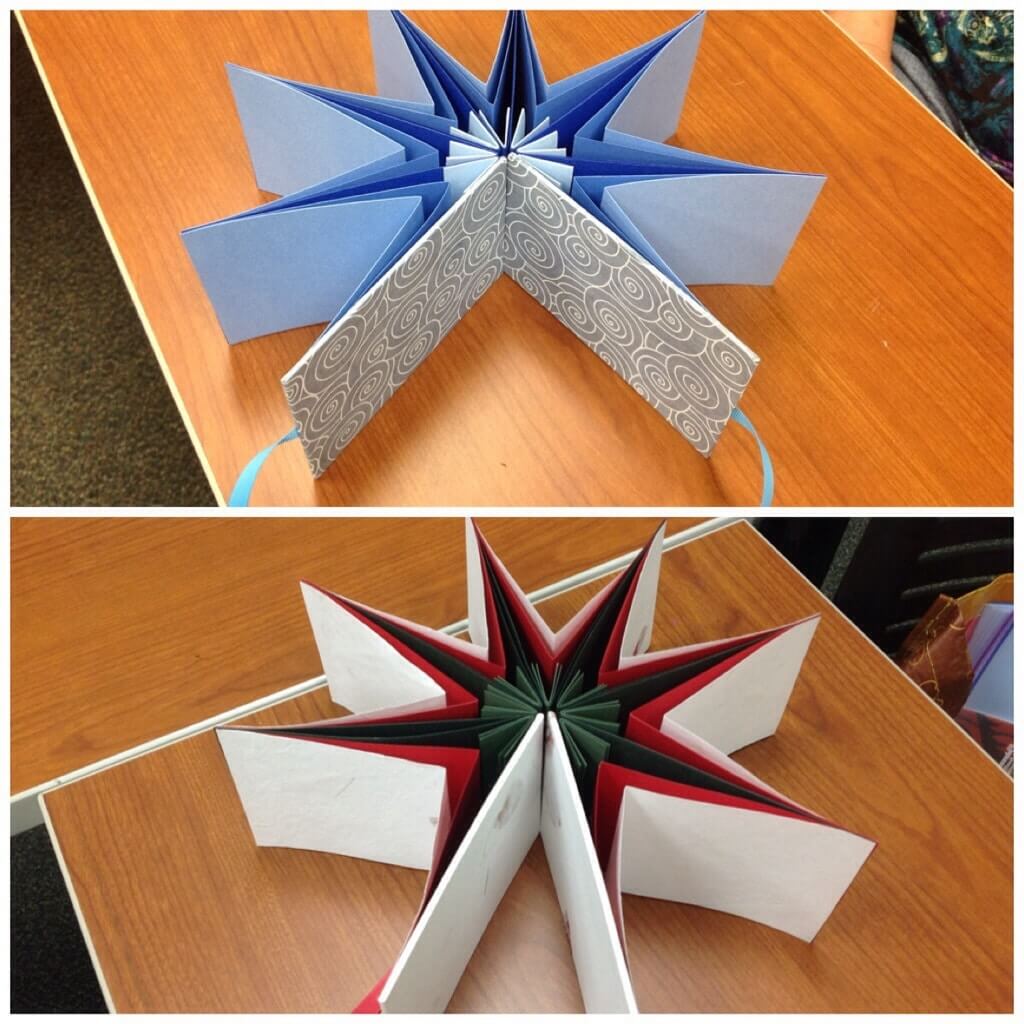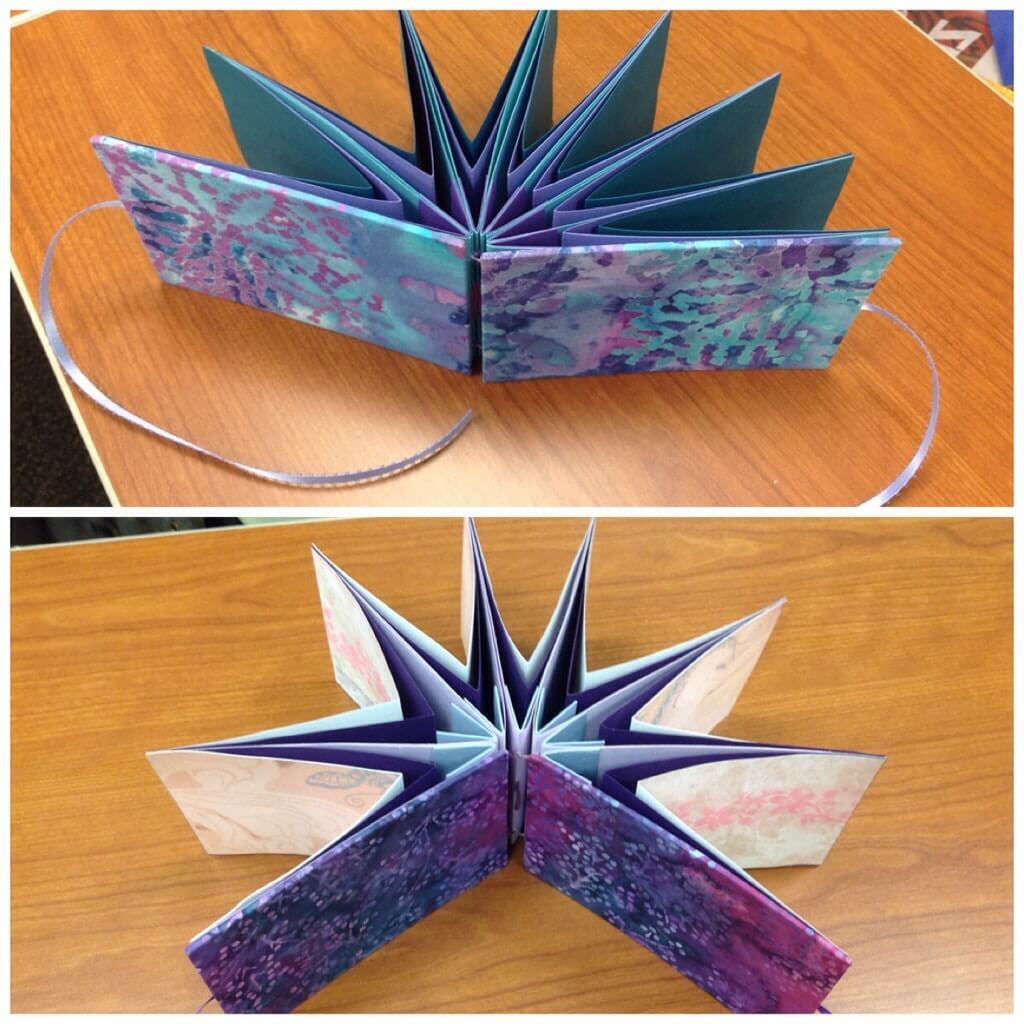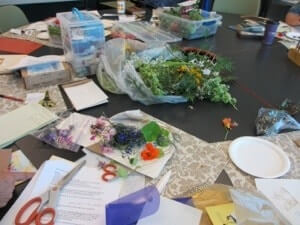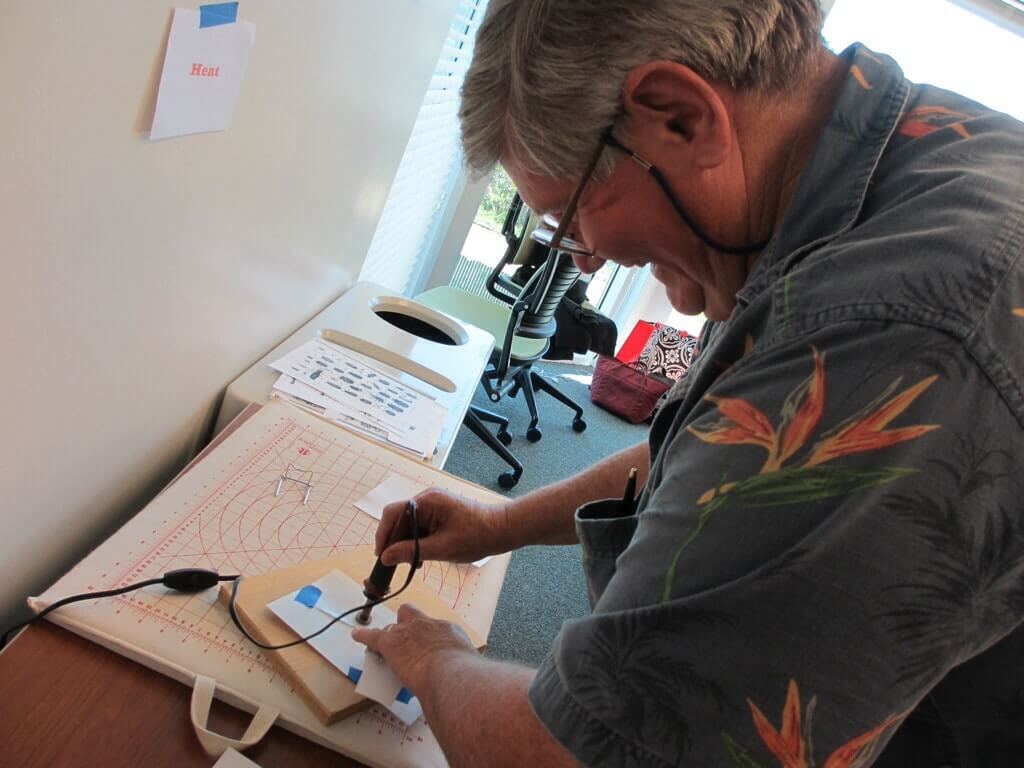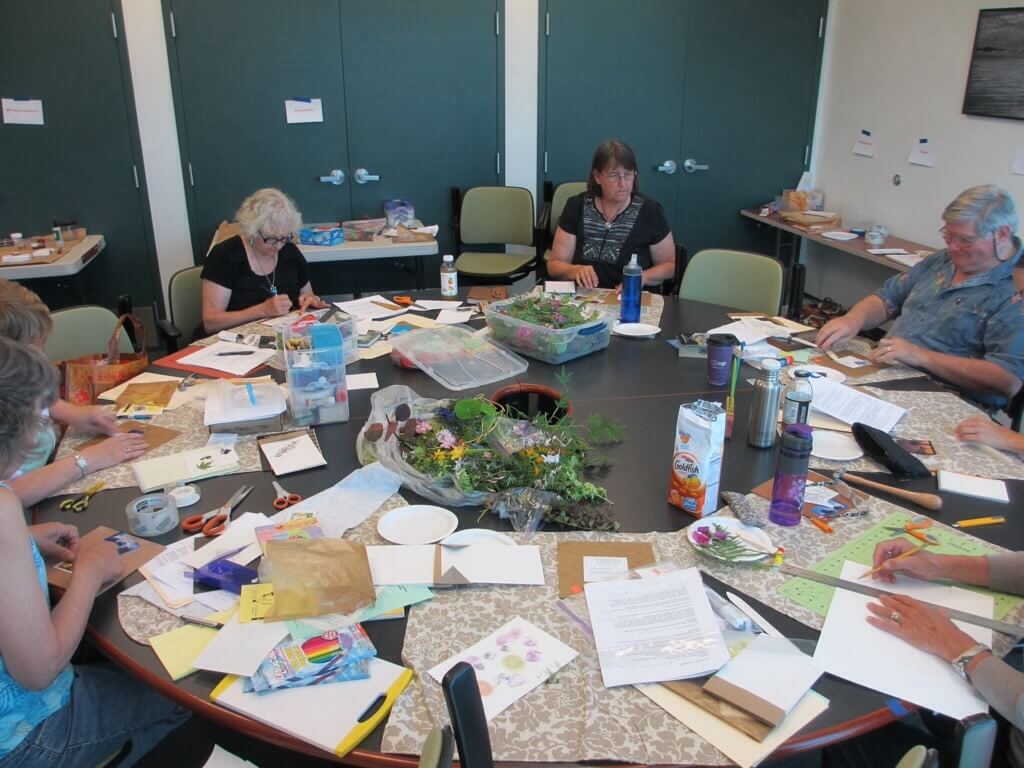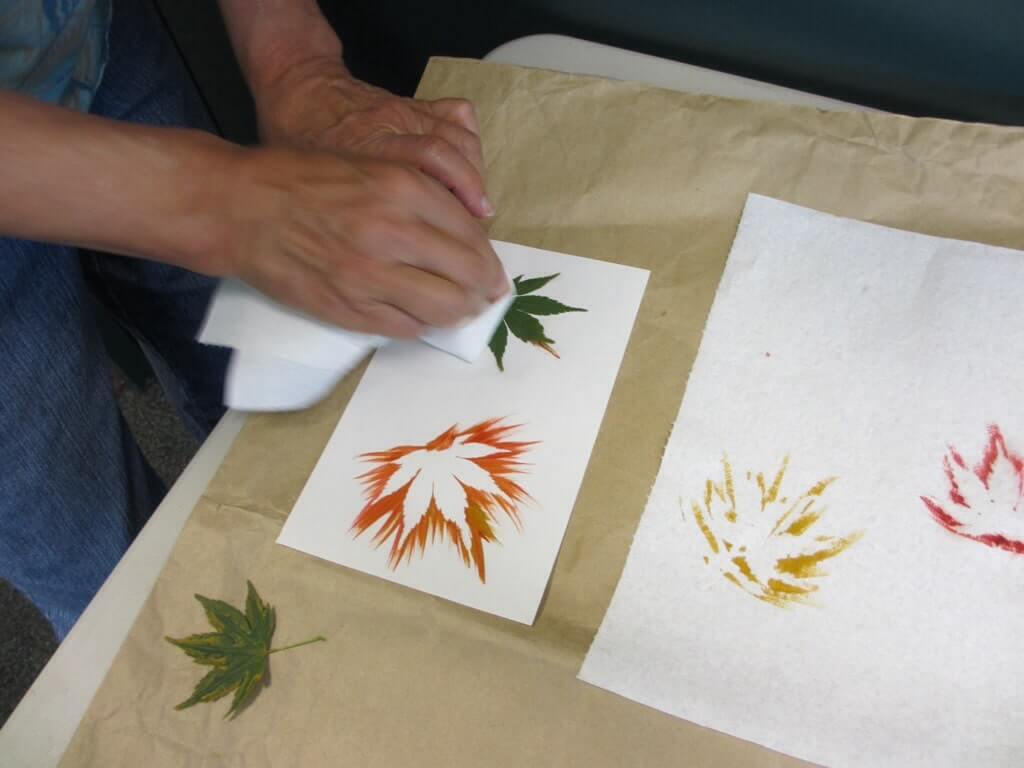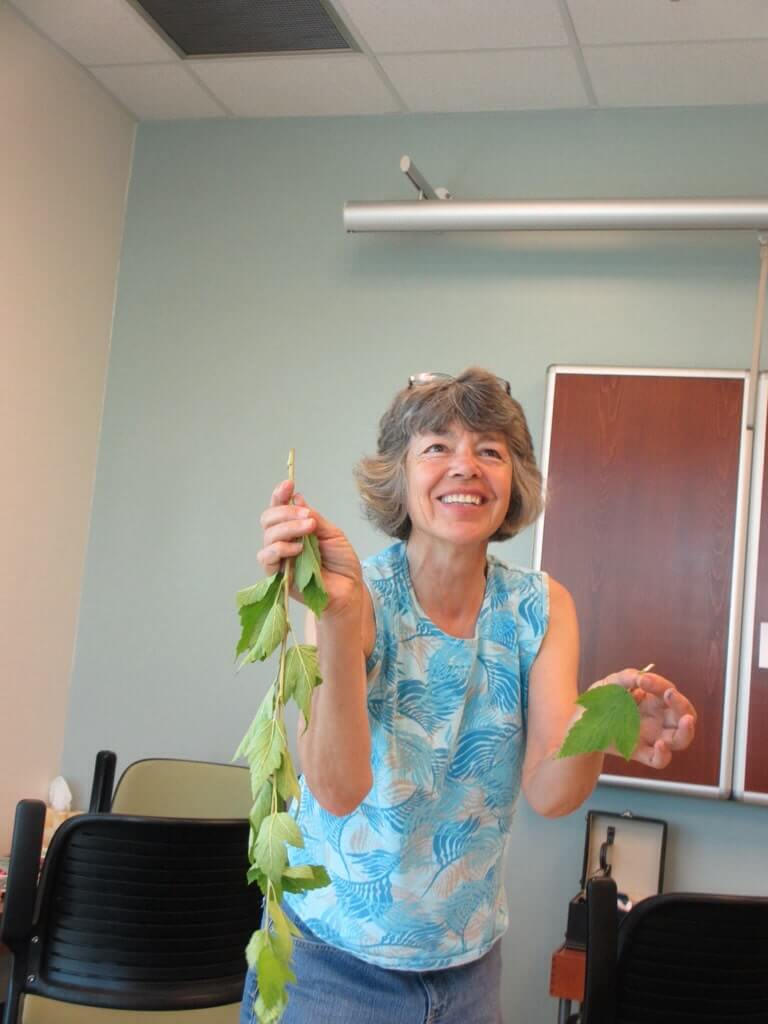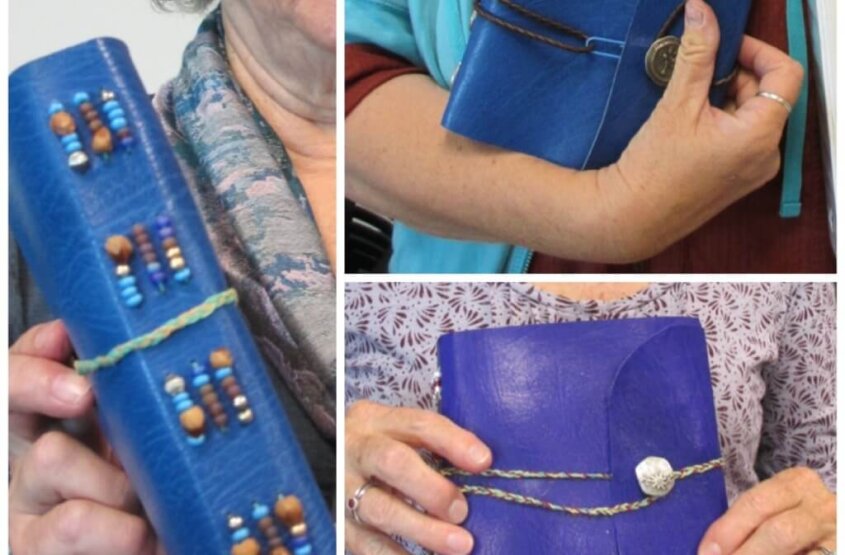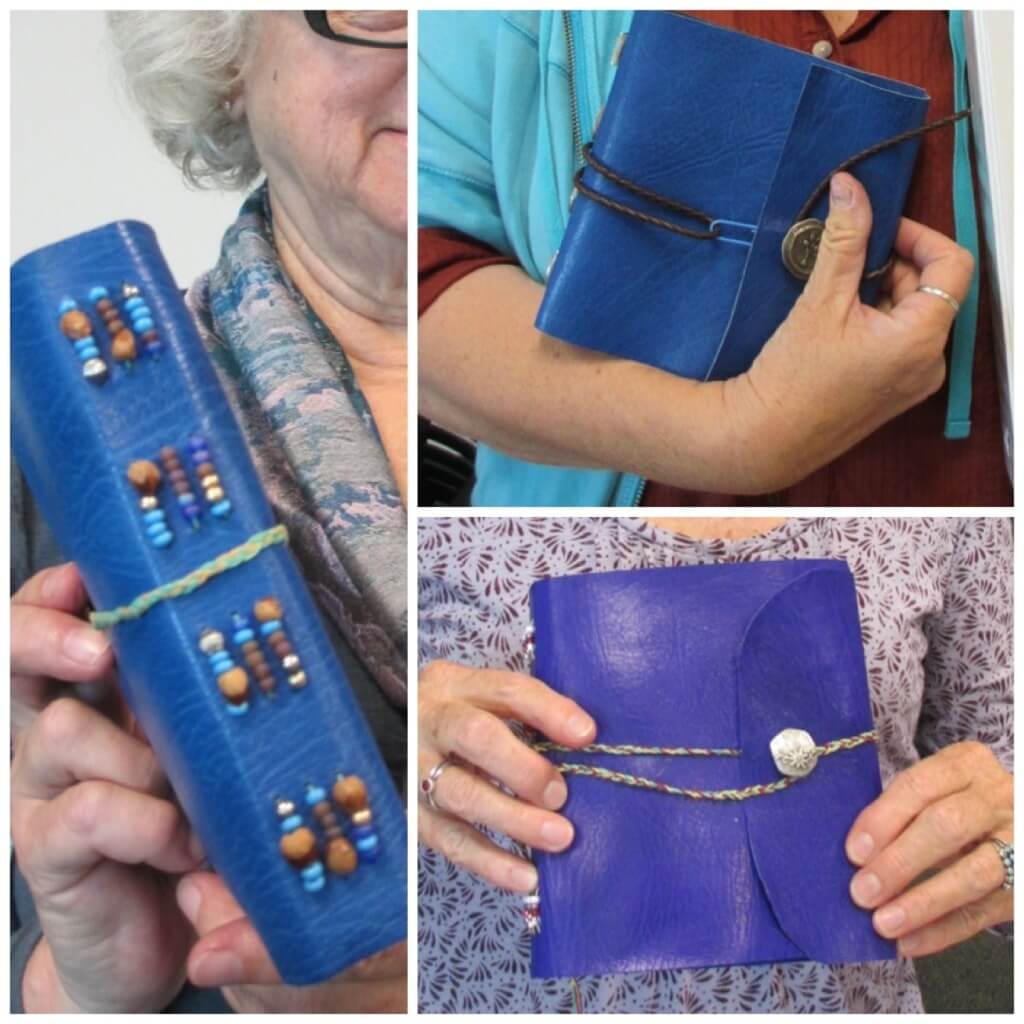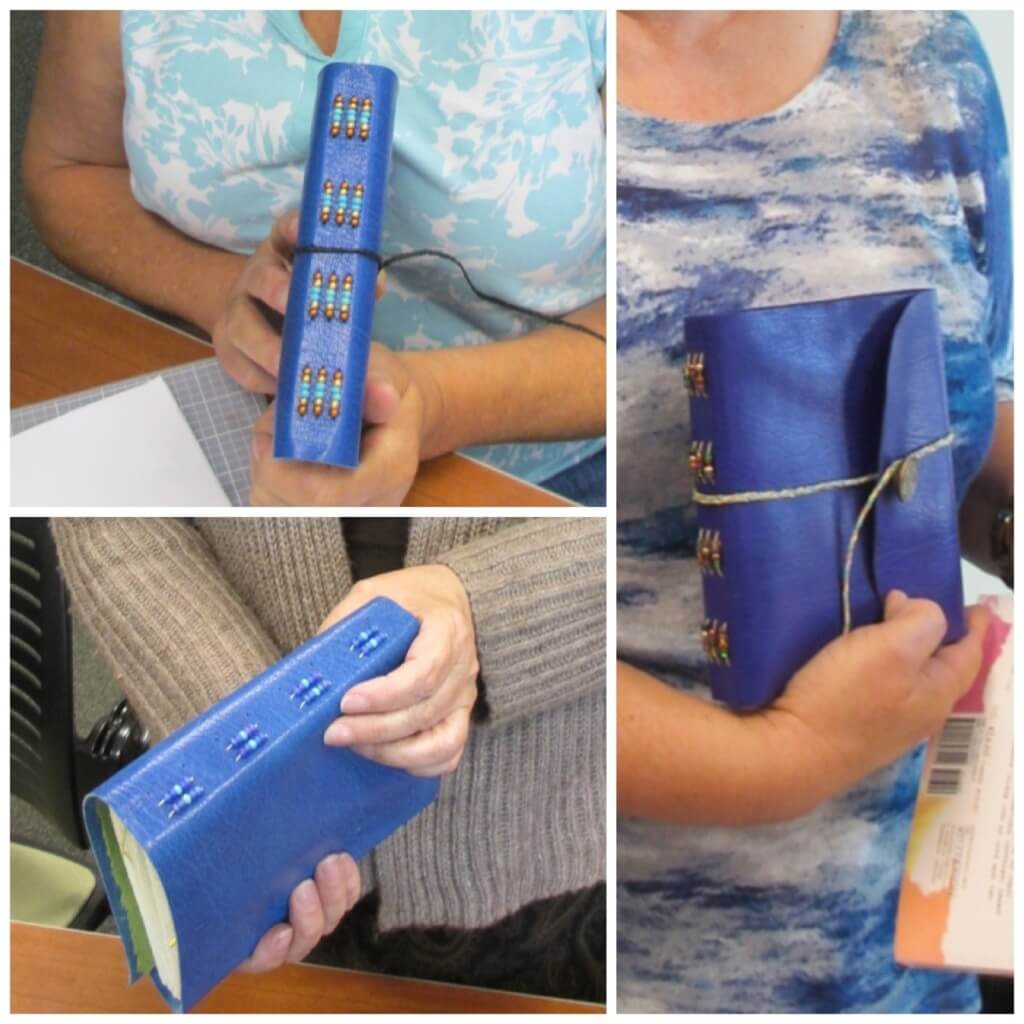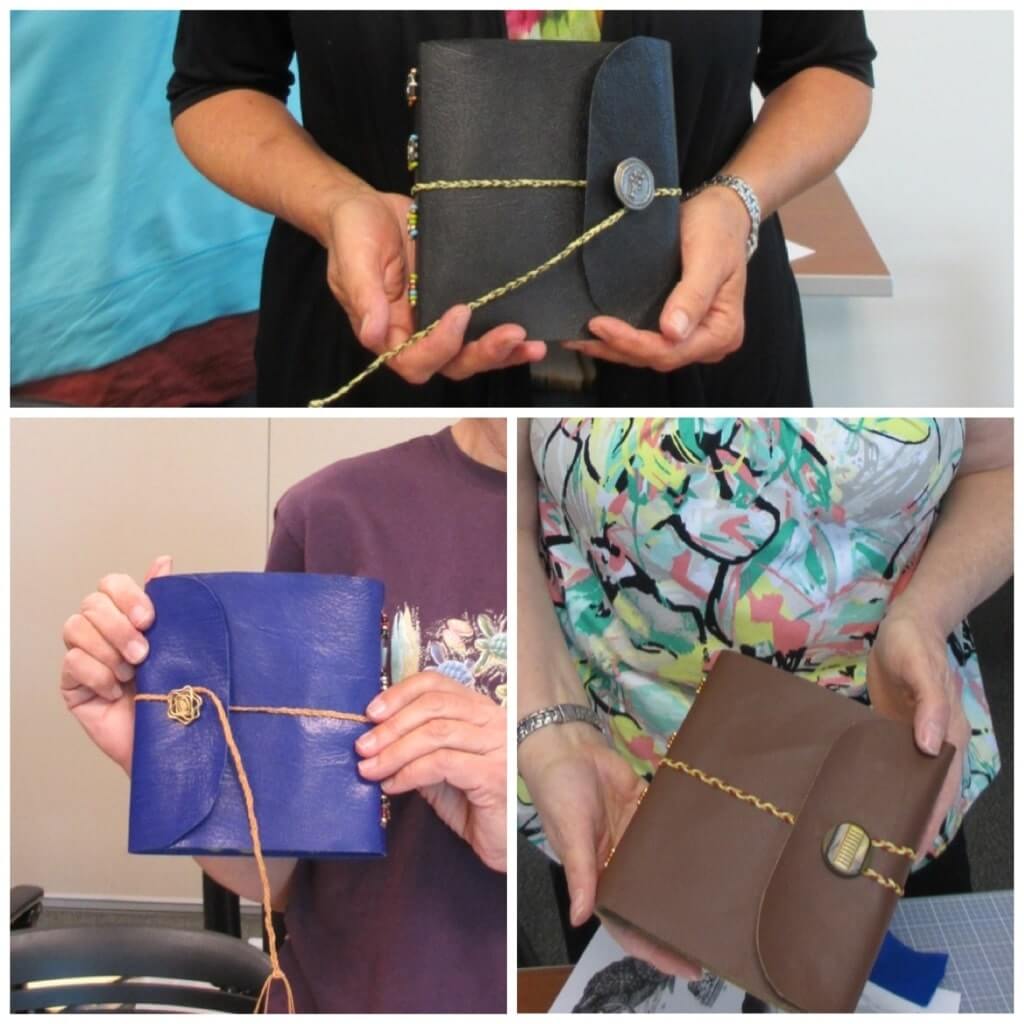I spent two wonderful afternoons with twelve very creative students. To prepare the pages for the books we spent a bit of time working with acrylic inks on watercolor papers. The intention was to create some kind of background for other artwork that would be added when the book was sewn. Following are just a few of the background papers.

The covers were cut from faux emu upholstery fabric—a great material because it doesn’t fray or tear.

The sections were sewn onto the straps with waxed linen or cotton embroidery thread. Some students had experience with the long stitch but the kettle stitch was new to most. They all did a great job on the sewing. Below are some examples of pages that were embellished after the book was sewn as well as a few photos of book closures.




